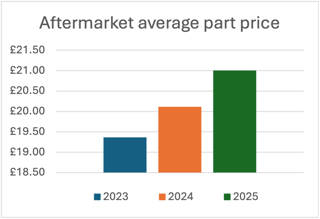Dealers are missing out on an average of £330,000 a year or £1.5 billion in total servicing and parts sales by missing condition checks on vehicles that come through the business.
According to Coachworks Consulting dealers are not condition checking 15% of stock.
Karl Davis, managing director at Coachworks, (pictured) said: “That’s typically the real figure we find when we audit vehicle health check completion during our in-retailer visits on assignments such as growth appraisals.
“But every outlet should be aiming for 100% to fulfil duty of care obligations and to maximise opportunities to sell.
“Anything less than 95% vehicle health check completion as an absolute minimum could compromise retailers in today’s litigious society and fiercely competitive business environment.”
Davis said too many dealer principals invest in state-of-the-art software and hardware and then fail to capitalise on it.
He said: “The true potential of electronic vehicle health checks (eVHCs) and other software is only tapped if the technology is embraced from the top down.
“Dealer principals can’t abdicate responsibility once they’ve signed off the purchase order. They need to know that input and output data is robust, they need to be able to see the story behind the front page headlines and they need the ability to introduce cultures and processes that maximise opportunities.
“When arguably one of the biggest suppliers of eVHC software finds that only a third of red or amber work is actually sold, the industry has to take notice."
Davis believes there should be a daily comparison of retail job cards versus completed VHCs and the value of red and amber work sold should be compared to the amount of red and amber work identified.
In addition, Coachworks believes, retailers must know how much work has been identified by individual technicians and how much of that work has been sold by individual advisers.
Davis said: “The technician should be loading the revenue pipe and the advisor should be selling it.
“When you consider that more than 50% of profits come from aftersales for most retailers, and that absorption is dropping towards 50%, there can’t be many more important things for a business to get right.
“Some software providers make most of their money from simply licensing the product. But technology is not a standalone solution – it can only accelerate good people and processes.”



















GrahamKinnear - 10/10/2012 08:52
VHC isn't the be all and end all when it comes to customers and making money. After all if your data base and customer records are invalid or wrong before you start then you aren't going to reach the customer in the first place and so you try to compensate for the lack of volume by selling more to a diminishing client base. Get a data base health check first and see where you stand. There are companies out there who will do an initial check free. MDF Solutions are one but there are others.